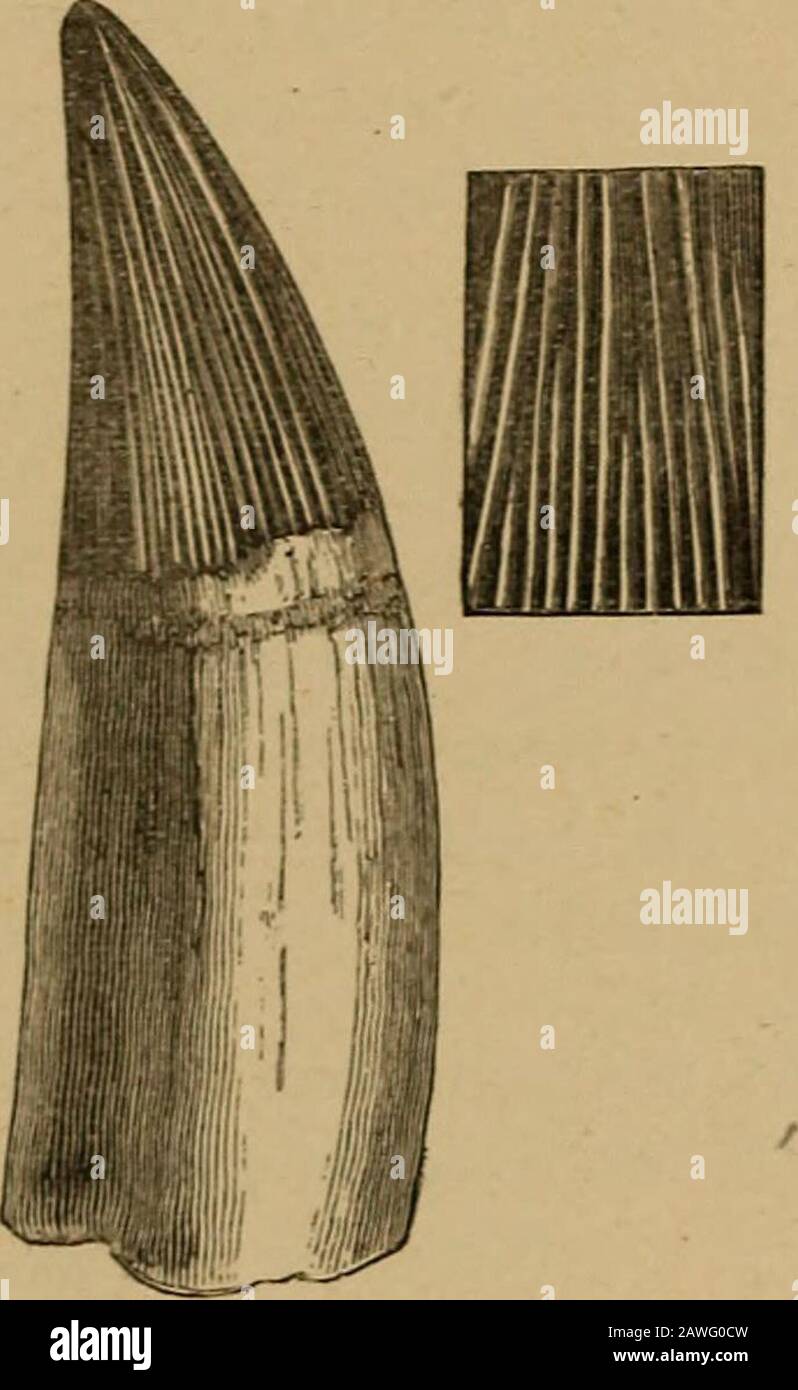Catalogue of the fossil Reptilia and Amphibia in the British Museum (Natural history) ..By Richard Lydekker .. . rum, and a mammilla in the centre of theterminal faces. Pectoral and pelvic girdles unknown. The limbreferred by Kiprijanoff to the so-called Lutkesaurus agrees veryclosely with that of Cimoliosaurus jportlandicus. This genus is probably derived from Cimoliosaurus, with whichit agrees in the general structure of the teeth and vertebras. 1 Geology of Oxford, p. 372 (1871).—Ex Owen, MS. 2 Odontography, pt. ii. pi. 72, figs. 3, 4 (1841). 3 Mem. Ac. Imp. St. Petersbourg, vol. xxxi. art.

Image details
Contributor:
The Reading Room / Alamy Stock PhotoImage ID:
2AWG0CWFile size:
7.1 MB (219 KB Compressed download)Releases:
Model - no | Property - noDo I need a release?Dimensions:
1239 x 2017 px | 21 x 34.2 cm | 8.3 x 13.4 inches | 150dpiMore information:
This image is a public domain image, which means either that copyright has expired in the image or the copyright holder has waived their copyright. Alamy charges you a fee for access to the high resolution copy of the image.
This image could have imperfections as it’s either historical or reportage.
Catalogue of the fossil Reptilia and Amphibia in the British Museum (Natural history) ..By Richard Lydekker .. . rum, and a mammilla in the centre of theterminal faces. Pectoral and pelvic girdles unknown. The limbreferred by Kiprijanoff to the so-called Lutkesaurus agrees veryclosely with that of Cimoliosaurus jportlandicus. This genus is probably derived from Cimoliosaurus, with whichit agrees in the general structure of the teeth and vertebras. 1 Geology of Oxford, p. 372 (1871).—Ex Owen, MS. 2 Odontography, pt. ii. pi. 72, figs. 3, 4 (1841). 3 Mem. Ac. Imp. St. Petersbourg, vol. xxxi. art. 6, p. 35 (1883), 4 See Seeley, Quart. Journ. Geol. Soc. vol. xxxii. p. 433. PLESIOSAURIDiE. Polyptychodon interruptus, Owen l. 173 The type species2. Typically the ridges on the enamel of theteeth (fig. 58) placed at a considerable distance apart, and a largenumber of them, especially on the convex side, not extending to thesummit. Other teeth show a transition to the next form. The horizon of the type specimen is not mentioned. Hab. Europe (England, France3, Germany *, Bohemia 4, andliussia *). Fig. 58.. Poh/ptychodon interruptus.—Tooth; from the Cambridge Greensand. }, . Aportion of the enamel of the crown is shown on the right, of the naturalsize. The following specimens are from the Upper Chalk; in many ofthem the ridges on the enamel are more approximated and finerthan in the specimens from the Cambridge Greemand. 49011. The right half of the anterior extremity of the mandibular{Fig.) symphysis, showing one entire tooth of medium size andthe alveolus of a second ; from Kent. Figured in DixonsGeology of Sussex, 1st ed. pi. xxxviii. fig. 3, and alsoby Owen in his Cretaceous lleptilia (Mon. Fal. Soc), pt. i. pi. x. fig. 7 (1851). Purchased*, 1878. 1 Odontography, Alias, pt. ii. p. 19, pi. 72. fig. I (1841). 2 The name P. continuity occurs first in the original description, but it seemspreferable to take the present and better known form as the type. 3 Sauvage, Mem. Soc. Gt